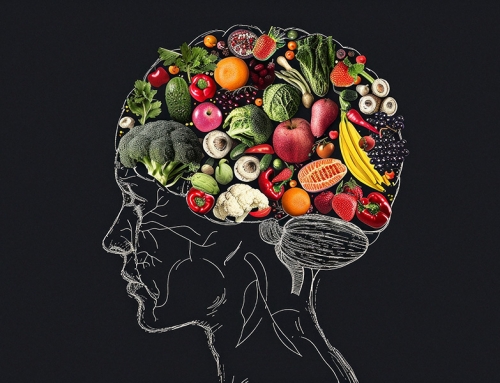Introduction
In today’s fast-paced world, the importance of making healthy food choices cannot be overstated. With our lives becoming busier by the day, the food we consume plays an important role in determining our overall health and well-being. However, the modern marketplace presents consumers with an overwhelming variety of food products, each claiming to be the healthiest, most delicious, or the ultimate solution to our dietary needs. Amidst this deluge of options, it has become increasingly challenging to decipher which foods truly align with our health goals.
This is where the art of reading food labels comes into play as an essential skill for consumers. Food labels serve as a crucial source of information that empowers us to make informed choices about the foods we bring into our homes and consume. They offer glimpse into the nutritional content, ingredients, and potential allergens present in a product. Understanding these labels allows us to shift through the marketing noise and make decisions that support our health and well-being.[1]
Basics of food labels
Food labels are more than just stickers on products; they are governed by strict regulations enforced by the FDA in the United States. These rules ensure that consumers receive accurate and standardized information about the nutritional content of food items. Key components of food labels include the serving size, calorie count, macronutrient breakdown (fats, carbohydrates, and proteins), micronutrient details (vitamins and minerals), and the ingredient list. This information empowers consumers to make informed and healthier choices, whether they’re managing their calorie intake, avoiding allergens, or seeking specific nutrients in their diet. Understanding these basics is essential in today’s complicated world of food choices, fostering better dietary decisions for improved well-being.[2]
Understanding serving sizes
Understanding serving sizes and portion sizes is crucial for interpreting food labels accurately and making informed dietary decisions. Serving size refers to the standardized measurement of a product set by the manufacturer, often provided in grams, ounces, or other units. It serves as a reference point for the nutritional information presented on the label. On the other hand, portion size is the amount of the product you choose to eat in a single sitting, which can be more or less than the specified serving size.
To adjust nutrient information based on your actual portion, you need to do some simple mathematics. If you consume more or less than the serving size, you should adjust the nutrient values proportionally. For instance, if a serving size of cereal is 1 cup, and you eat 2 cups, you’ll need to double the nutrient values listed on the label to reflect your actual intake. Conversely, if you only consume half a serving, you should halve the nutrient values. This adjustment is critical because it helps you accurately assess the calories and nutrients you’re consuming, allowing you to make precise choices aligned with your dietary goals and needs. By understanding the distinction between serving size and portion size and making these adjustments, you can better manage your nutritional intake and make healthier food choices that suit your lifestyle and preferences.[3]
Calories and nutrients
Calories provide a fundamental measure of the energy food offers, making total calorie information on food labels significant for managing daily energy intake. Understanding the source and distribution of these calories, such as the contribution from fats, carbohydrates, and proteins, is crucial for balanced nutrition. Among fats, it’s essential to differentiate between saturated, trans, and unsaturated fats, as saturated and trans fats should be limited due to their potential negative impact on heart health. Carbohydrates, sugars, fiber, and the glycemic index play a vital role in blood sugar control and sustained energy levels. Fiber is especially important for digestive health. Protein is an essential nutrient for building and repairing tissues, while vitamins and minerals, each with unique health benefits, are critical for overall well-being. By comprehending these aspects of calories and nutrients, individuals can make informed dietary choices that promote their health and vitality.[4]
Ingredients list
Reading the ingredient list on food labels is an essential practice for making informed and health-conscious decisions. The order of ingredients, listed by weight, provides insights into a product’s primary components. To spot hidden sugars and additives, watch for names that might not be immediately recognizable or ingredients near the top of the list. For those with food sensitivities or allergies, allergen information is prominently displayed, helping to ensure product safety. This knowledge empowers consumers to grasp a product’s composition fully, detect potential health concerns, and tailor their choices to dietary preferences or requirements, ultimately promoting a healthier and more conscientious approach to eating.[5][7]
Health claims and marketing tricks
Front-of-package claims and marketing terms like “low fat,” “high in antioxidants,” “natural,” or “organic” serve as convenient shortcuts for consumers seeking healthier food options. However, their accuracy can vary, making it imperative to scrutinize the Nutrition Facts Panel and ingredient list for validation. While terms like “natural” and “organic” imply certain attributes, they don’t guarantee overall nutritional quality. Caution is necessary because products labeled as “low sugar” or “low sodium” may still contain significant quantities of these substances. A discerning approach to these marketing claims ensures that consumers make well-informed choices and avoid falling prey to potential marketing tricks, leading to more accurate alignment with their health and dietary objectives.[5][7]
Special diets and dietary restrictions
Food labels play a pivotal role in catering to specific dietary needs and restrictions. Labels like “gluten-free” and “vegan” provide crucial information for individuals with dietary requirements. “Gluten-free” labels are vital for those with celiac disease or gluten sensitivity, as they ensure the product doesn’t contain wheat, barley, or rye. Similarly, “vegan” labels indicate that a product contains no animal-derived ingredients, supporting plant-based diets.
However, labels like “sugar-free” and “low-fat” require a more discerning approach. While “sugar-free” can be helpful for individuals with diabetes, some sugar substitutes used in these products may have health implications or cause digestive issues. “Low-fat” products may compensate for reduced fat content with higher sugar or artificial additives, potentially negating their health benefits. It’s crucial for consumers to read the Nutrition Facts Panel and ingredient list to assess the overall nutritional value of these products accurately.
Labels like “gluten-free” and “vegan” can be invaluable for individuals with specific dietary needs, simplifying their food choices. However, labels such as “sugar-free” and “low-fat” should be approached cautiously, as they may not always translate to healthier options. Scrutinizing the entire label and understanding the nutritional trade-offs is essential for making informed decisions that align with individual dietary goals and overall health.[5][6][7]
Using food labels for health goals
Food labels are powerful tools for achieving various health goals, including weight management and preventing nutrient deficiencies. When it comes to weight management, understanding serving sizes and calorie information is paramount. By comparing the calorie content of different products, individuals can make choices that align with their daily caloric intake goals, whether it involves losing, maintaining, or gaining weight. Furthermore, analyzing macronutrients like fats, carbohydrates, and proteins helps in crafting a balanced diet that suits one’s nutritional needs and supports weight goals.
Food labels also play a crucial role in tailoring food choices to prevent nutrient deficiencies. For example, those aiming to increase their calcium intake can scrutinize labels for products rich in this mineral. Similarly, individuals concerned about their fiber intake can choose products with higher fiber content to support digestive health.
Ultimately, the importance of making informed choices through food labels cannot be overstated. Whether one seeks weight management, nutrient sufficiency, or overall well-being, these labels provide the necessary information to guide decisions towards healthier dietary habits. They empower individuals to take control of their nutrition, fostering a lifestyle that aligns with their health goals and promotes long-term vitality.
References
- Ljusic, N., Fagerstrøm, A., Sigurdsson, V., & Arntzen, E. (2023). Information, ingestion, and impulsivity: The impact of technology-enabled healthy food labels on online grocery shopping in impulsive and non-impulsive consumers. Frontiers in Nutrition, 10. //doi.org/10.3389/fnut.2023.1129883
- Viola, G. C. V., Bianchi, F., Croce, E., & Ceretti, E. (2016). Are food labels effective as a means of health prevention? Journal of Public Health Research, 5(3). //doi.org/10.4081/jphr.2016.768
- Gibney, M., O’Sullivan, A., Flynn, A., Walton, J., Daniel, H., Manios, Y., Martinez, A., Saris, W., Gibney, E., & Uzhova, I. (2018). Analysis of the National Adult Nutrition Survey (Ireland) and the Food4Me Nutrition Survey Databases to Explore the Development of Food Labelling Portion Sizes for the European Union. Nutrients, 11(1), 6. //doi.org/10.3390/nu11010006
- Cantu-Jungles, T., McCormack, L., Slaven, J., Slebodnik, M., & Eicher-Miller, H. (2017). A Meta-Analysis to Determine the Impact of Restaurant Menu Labeling on Calories and Nutrients (Ordered or Consumed) in U.S. Adults. Nutrients, 9(10), 1088. //doi.org/10.3390/nu9101088
- Todd, M., Guetterman, T., Volschenk, J., Kidd, M., & Joubert, E. (2022). Healthy or Not Healthy? A Mixed-Methods Approach to Evaluate Front-of-Pack Nutrition Labels as a Tool to Guide Consumers. Nutrients, 14(14), 2801. //doi.org/10.3390/nu14142801
- Quintiliano Scarpelli, D., Pinheiro Fernandes, A. C., Rodriguez Osiac, L., & Pizarro Quevedo, T. (2020). Changes in Nutrient Declaration after the Food Labeling and Advertising Law in Chile: A Longitudinal Approach. Nutrients, 12(8), 2371. //doi.org/10.3390/nu12082371
- Sajdakowska, M., Gębski, J., Wardaszka, A., & Wieczorek, A. (2022). Evaluation of Food Labelling the Products with Information Regarding the Level of Sugar: A Preliminary Study. Nutrients, 14(13), 2697. //doi.org/10.3390/nu14132697
- Yang, X., Huang, Y., Han, M., Wen, X., Zheng, Q., Chen, Q., & Chen, Q. (2021). The Differential Effects of Physical Activity Calorie Equivalent Labeling on Consumer Preferences for Healthy and Unhealthy Food Products: Evidence from a Choice Experiment. International Journal of Environmental Research and Public Health, 18(4), 1860. //doi.org/10.3390/ijerph18041860
Written by
Ashish Joshi1, Gunjan Sooden2
- Dean and Distinguished University Professor at School of Public Health, University of Memphis, TN, USA
- Foundation of Healthcare Technologies Society, New Delhi, India






Leave A Comment